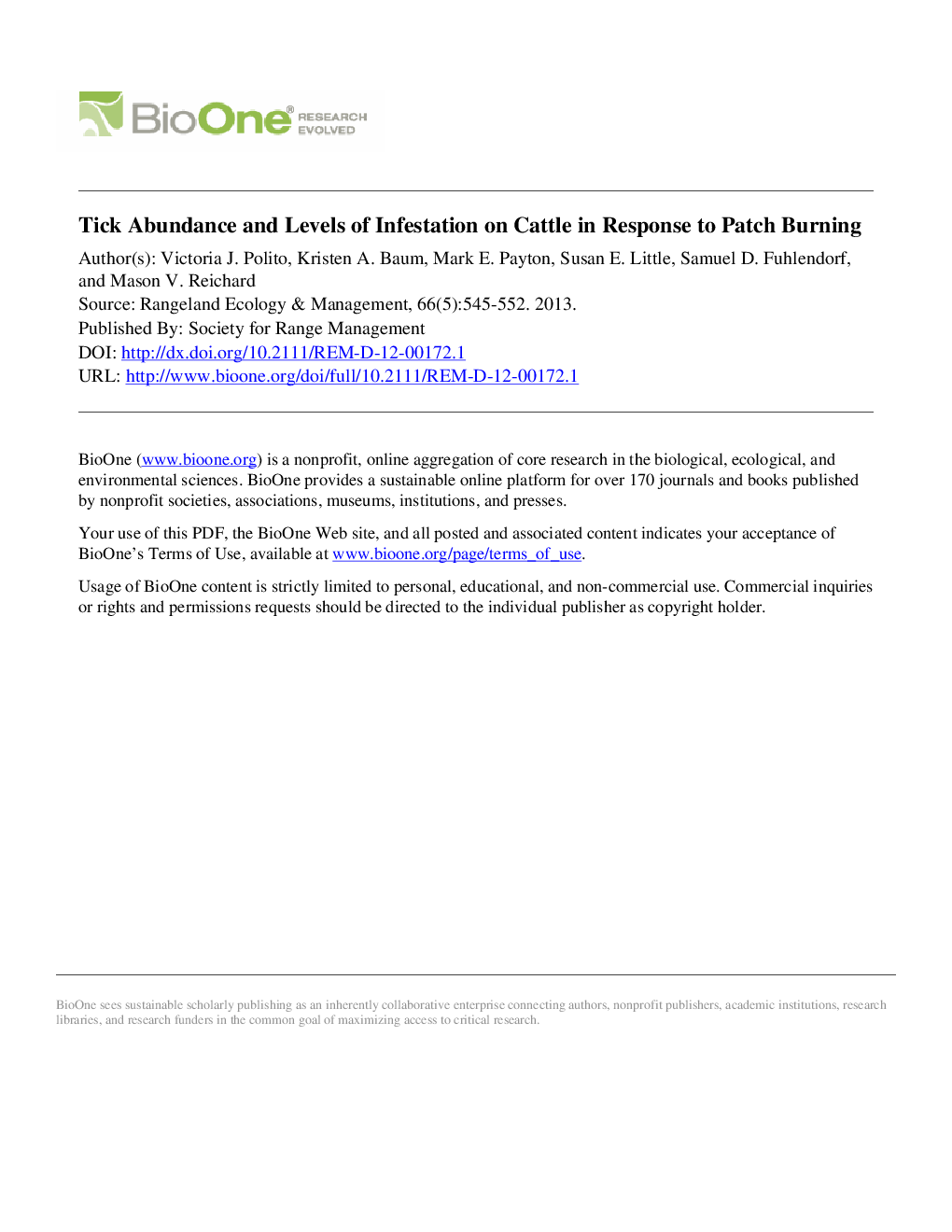| Article ID | Journal | Published Year | Pages | File Type |
|---|---|---|---|---|
| 4404294 | Rangeland Ecology & Management | 2013 | 9 Pages |
Abstract
Patch burning (PB) uses frequent, spatially discrete fires throughout a pasture to create variation in the composition and structure of the plant community. The complex vegetation changes incurred from this type of burning regimen in addition to the focal grazing of cattle induced by PB should reduce tick populations by creating less favorable microhabitats. To determine if a reduction in tick populations occurred on PB pastures, three PB-treated pastures and three control pastures were used. PB pastures were divided into six subplots with one burned rotationally each spring and summer. Control pastures and each PB subplot had a burn interval of 3Â yr. Pastures were dragged with 1-m2 flannel cloth panels to estimate tick abundance for 4Â yr. (2006, 2007, 2009, and 2010). Infestation levels with ticks (i.e., tick burden) and weight for five calves and three cows per pasture were recorded once a month from April to October in 2009, 2010, and 2011. Differences in tick abundance between PB pastures and control pastures were not significant except in 2006 when fewer adult ticks were detected in PB pastures. A total of 13â609 ticks were observed on cattle. Animals on PB pastures had 4â028 (29.6%) ticks whereas 9â581 (70.4%) ticks were on cattle from control pastures. Tick burden was significantly reduced on animals in PB pastures compared to animals in control pastures in 4 out of 6 mo. Significant differences in average daily weight gain of calves in PB and control pastures were not detected. Although differences were not detected in questing tick abundance on pastures, significant reductions of tick burden on cattle in PB-treated pastures indicates that PB can be used to help control ticks in pastures.
Related Topics
Life Sciences
Agricultural and Biological Sciences
Agricultural and Biological Sciences (General)
Authors
Victoria J. Polito, Kristen A. Baum, Mark E. Payton, Susan E. Little, Samuel D. Fuhlendorf, Mason V. Reichard,
